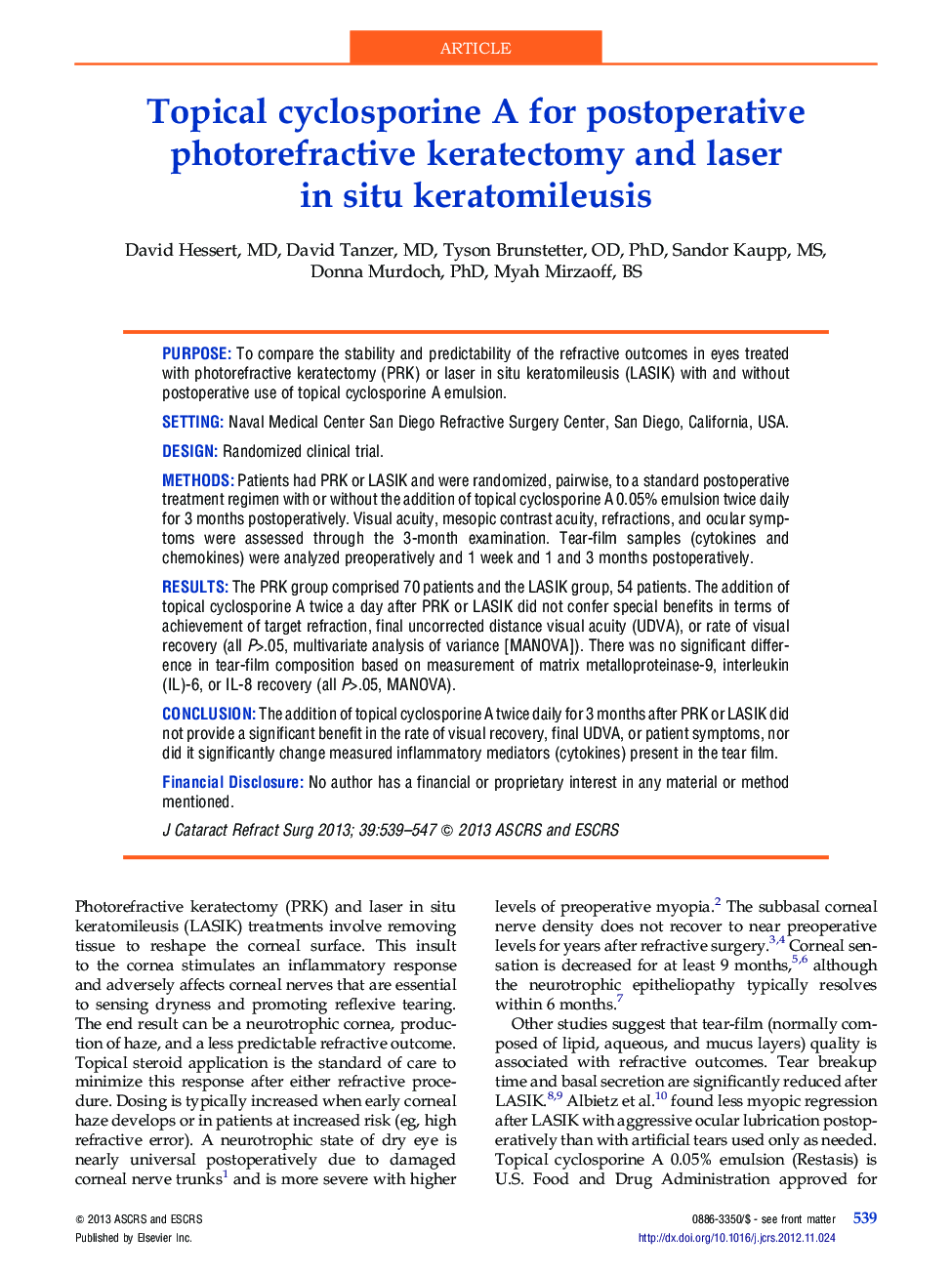| Article ID | Journal | Published Year | Pages | File Type |
|---|---|---|---|---|
| 4017162 | Journal of Cataract & Refractive Surgery | 2013 | 9 Pages |
PurposeTo compare the stability and predictability of the refractive outcomes in eyes treated with photorefractive keratectomy (PRK) or laser in situ keratomileusis (LASIK) with and without postoperative use of topical cyclosporine A emulsion.SettingNaval Medical Center San Diego Refractive Surgery Center, San Diego, California, USA.DesignRandomized clinical trial.MethodsPatients had PRK or LASIK and were randomized, pairwise, to a standard postoperative treatment regimen with or without the addition of topical cyclosporine A 0.05% emulsion twice daily for 3 months postoperatively. Visual acuity, mesopic contrast acuity, refractions, and ocular symptoms were assessed through the 3-month examination. Tear-film samples (cytokines and chemokines) were analyzed preoperatively and 1 week and 1 and 3 months postoperatively.ResultsThe PRK group comprised 70 patients and the LASIK group, 54 patients. The addition of topical cyclosporine A twice a day after PRK or LASIK did not confer special benefits in terms of achievement of target refraction, final uncorrected distance visual acuity (UDVA), or rate of visual recovery (all P>.05, multivariate analysis of variance [MANOVA]). There was no significant difference in tear-film composition based on measurement of matrix metalloproteinase-9, interleukin (IL)-6, or IL-8 recovery (all P>.05, MANOVA).ConclusionThe addition of topical cyclosporine A twice daily for 3 months after PRK or LASIK did not provide a significant benefit in the rate of visual recovery, final UDVA, or patient symptoms, nor did it significantly change measured inflammatory mediators (cytokines) present in the tear film.Financial DisclosureNo author has a financial or proprietary interest in any material or method mentioned.
